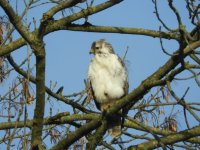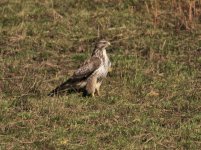KenM
Well-known member
Like most of us that live in the UK (and possibly Europe), over the last thirty odd years there has been an unprecedented increase and expansion of CB's into areas where they would hitherto have been classed as rare/uncommon. Virtually all my local birds are of a (dark) brown persuasion however (rarely) I've encountered the pale phase variants which to my eye are quite stunning and from an aesthete perspective can certainly nudge Osprey into second place.
Locally I've seen three examples 2017,2019 and 2021 with three out of area in East Sussex, all five examples have been seen between 2013 to '21 and all between February and May.
As I understand it, the pale phase variant is from the near continent (with Germany and Scandinavia) being the probable points of origin, thus I presume that my five records over eight years (Feb-May) suggest that these birds are mainly Winter visitors to the UK, or is it just a ''timing'' coincidence?
It might be interesting to know (if at all) these variants actually hybridize with the local populations (be surprised if they didn't), and also their frequency of occurrence elsewhere.
Cheers
Locally I've seen three examples 2017,2019 and 2021 with three out of area in East Sussex, all five examples have been seen between 2013 to '21 and all between February and May.
As I understand it, the pale phase variant is from the near continent (with Germany and Scandinavia) being the probable points of origin, thus I presume that my five records over eight years (Feb-May) suggest that these birds are mainly Winter visitors to the UK, or is it just a ''timing'' coincidence?
It might be interesting to know (if at all) these variants actually hybridize with the local populations (be surprised if they didn't), and also their frequency of occurrence elsewhere.
Cheers
Attachments
-
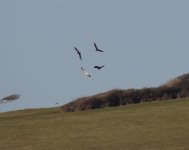 A flying Buzby 3..jpg558.9 KB · Views: 43
A flying Buzby 3..jpg558.9 KB · Views: 43 -
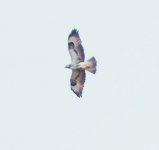 Odd Buzzard May 26th '13 West Sussex.jpg30 KB · Views: 42
Odd Buzzard May 26th '13 West Sussex.jpg30 KB · Views: 42 -
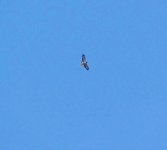 P1860491.jpeg Pale Morph CB. 7..jpeg72.3 KB · Views: 43
P1860491.jpeg Pale Morph CB. 7..jpeg72.3 KB · Views: 43 -
 P1860562.jpeg a White Buteo 2..jpeg323.1 KB · Views: 42
P1860562.jpeg a White Buteo 2..jpeg323.1 KB · Views: 42 -
 P2490380.jpeg Pale Phase Buzby1..jpeg126.2 KB · Views: 39
P2490380.jpeg Pale Phase Buzby1..jpeg126.2 KB · Views: 39 -
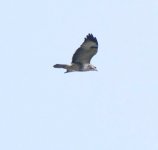 P2490378.jpeg Pale Phase Buzby over house 1..jpeg65.2 KB · Views: 37
P2490378.jpeg Pale Phase Buzby over house 1..jpeg65.2 KB · Views: 37







